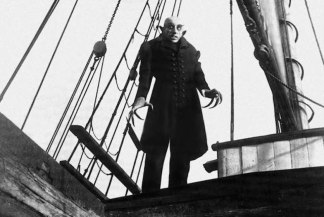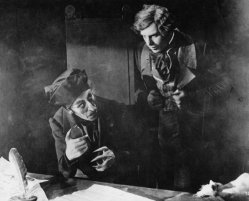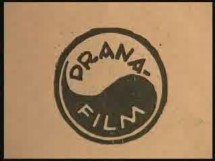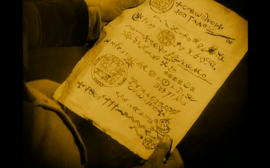The silent 1922 film Nosferatu, eine Symphonie des Grauens, or Nosferatu, a symphony of horrors, is renowned for being not just the first film adaptation of Bram Stoker’s novel Dracula, but a remarkable and early film in the horror genre which influenced later vampire films to the slow-gait of Michael Myers in the Halloween series.

Though based on Dracula, the film does contain some differences from the book. The film follows an estate agent named Hutter, who is contracted by Count Orlok of Transylvania to sell him a home in the German city of Wisborg. Orlok, in reality a vampire named “Nosferatu,” is more bat-like in appearance than other vampires and plagues the town of Wisborg until he is killed by the rising sun.
Aside from his grotesque appearance, there are other factors that set Orlok apart from other vampires in fiction, such as Count Dracula.
Firstly, Orlok, unlike Dracula, is never specified as being a former nobleman. Though he resides in a castle and briefly hides his vampirism in front of Hutter, Orlok otherwise makes no attempt to pass as a normal human or interact with normal society in Wisborg.

Since Orlok is not described as a nobleman infected with vampirism, the question now is where did he come from? In a book on vampires Hutter comes across during the film, Nosferatu is described as coming from the “seed of Belial,” and is often referred to as the “Bird of Death,” quite the contrast considering vampires in film would later become more connected to bats instead.
However, Nosferatu is different from later Dracula adaptations and really other vampire films in general not just because of its unique German-style or depiction of vampirism. The real difference lies in the fact that a belief in the occult was depicted not just in the film’s story, but played a large role in the actual production of the film.
 The studio which produced Nosferatu was called Prana Films, a reference to the Hindu concept of “prana,” or “life force.” Prana Films planned on releasing a series of films with occult and supernatural themes, but their only production was Nosferatu, due to a lawsuit following the film’s release by Bram Stoker’s widow which bankrupted the studio. The studio was co-founded by two people in 1921, Enrico Dieckmann and Albin Grau.
The studio which produced Nosferatu was called Prana Films, a reference to the Hindu concept of “prana,” or “life force.” Prana Films planned on releasing a series of films with occult and supernatural themes, but their only production was Nosferatu, due to a lawsuit following the film’s release by Bram Stoker’s widow which bankrupted the studio. The studio was co-founded by two people in 1921, Enrico Dieckmann and Albin Grau.
Grau, a German occultist, artist, architect and occultist, said he first got the idea for Nosferatu when he was in the German Army during World War I. In 1916, Grau said a Serbian farmer told him that his father had become a vampire and one of the undead.
However, Grau’s interest in the occult expanded far outside of film and his experience in the Germany Army. Grau was also a member of the occult group Grand Pansophical Lodge of the Orient-Berlin, serving as “Master of the Chair” under the ceremonial name “Pacitius.” He was also later a member of the group Fraternitas Saturni, or the Brotherhood of Saturn, a German magical group formed in 1926.

Grau is believed to have filmed the Weida Conferance, a meeting of occult leaders in 1925 held in Hohenleuben, Germany, though the film has since been lost. According to the article Nosferatu: The Vampire and the Occultist by Brian Robb:
“Grau had many titles and many roles – if there was a occult group active in the early 20th century then he was probably a member. Under the alias ‘Frater Pacitus’, he was a Master of the Pansophical Lodge, where he first met fellow occultist Eugene Grosche. Gray was also briefly an initiatve of the Ordo Templi Orientis, or OTI, primarily associated with the ‘great beast’ himself, Aleister Crowley.”

An important scene in the film which lasts only for a few seconds is a note written from Orlok to Hutter’s boss, Knock, whom is reportedly the subject of many rumors within Wisborg before he falls under Orlok’s influence, similar to Renfield. On the note, wherein Orlok states he wants to purchase a house in Wisborg, there can be seen a series of strange, occult-esque symbols. No mention is made by Knock regarding these symbols, but the fact Orlok is writing in a strange cypher instead of a language such as German or Romanian adds another subtle occult layer to the film.
The mysteries surrounding the film or its production have continued even into the modern day. According to a July 10, 2015 article by the Smithsonian Institution, a group of thieves robbed Murnau’s grave in Stahnsdorf Cemetery near Berlin. Aside from stealing the director’s skull, German authorities found traces of wax inside the tomb, suggesting some sort of occult practice was linked to the robbery.
Regardless of how much occult influence there was in the production of Nosferatu, the film continues to be one of the most famous horror films ever made, not just as an example of German expressionism but as an early entry into the vampire genre.
One thought on “Occultism in 1922’s Nosferatu”